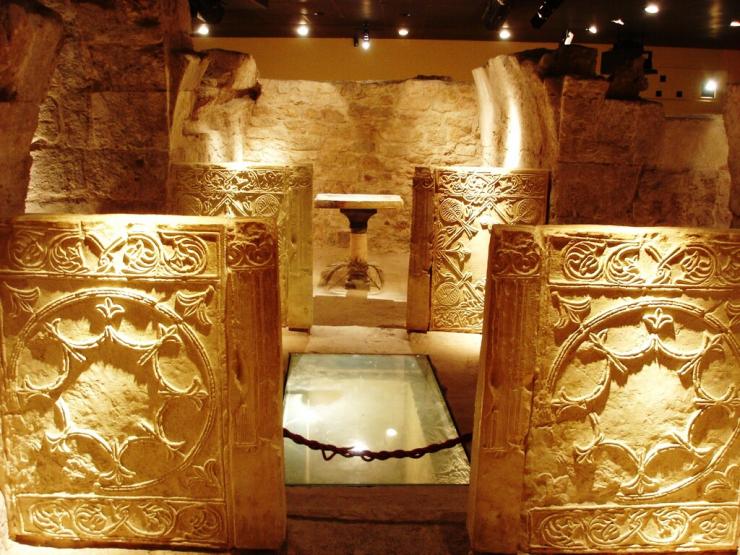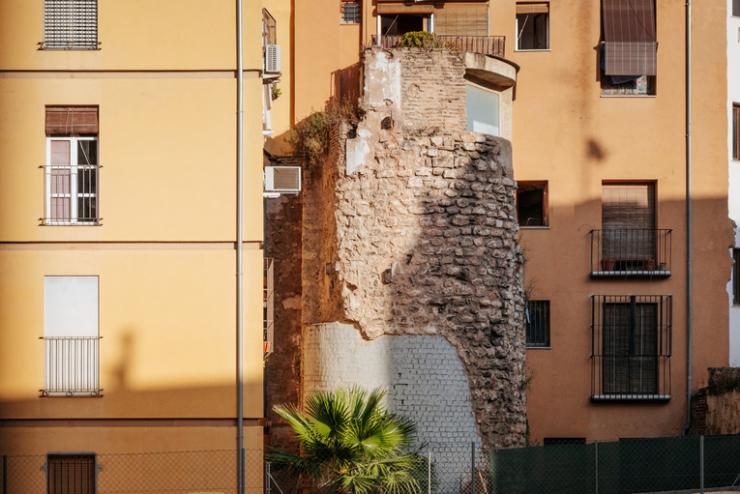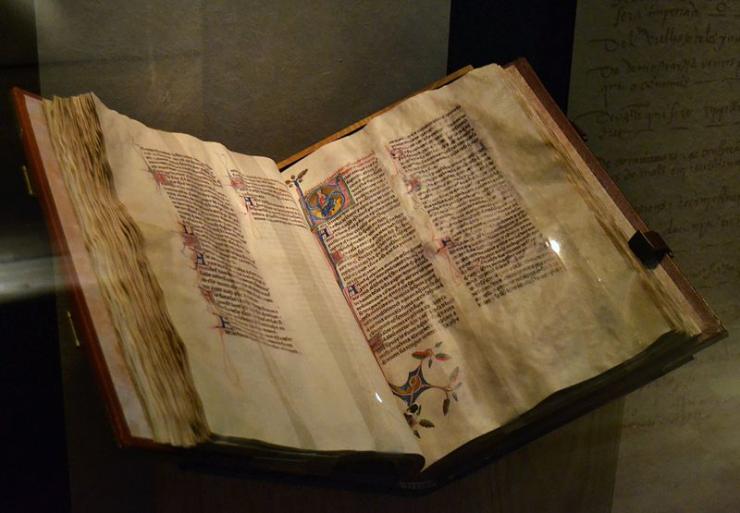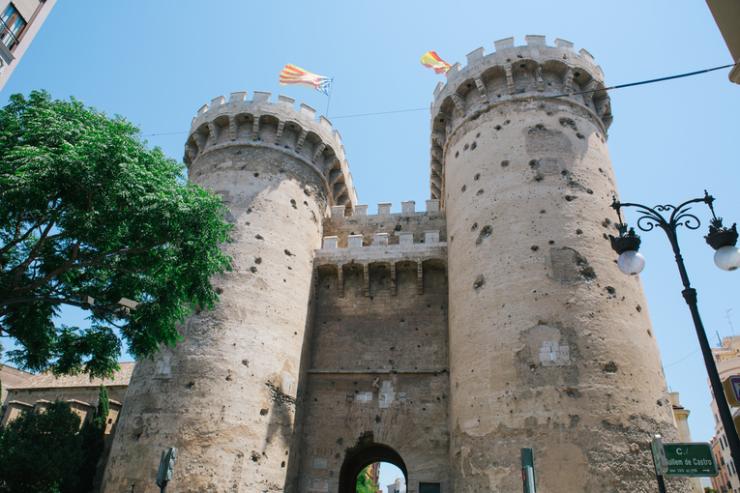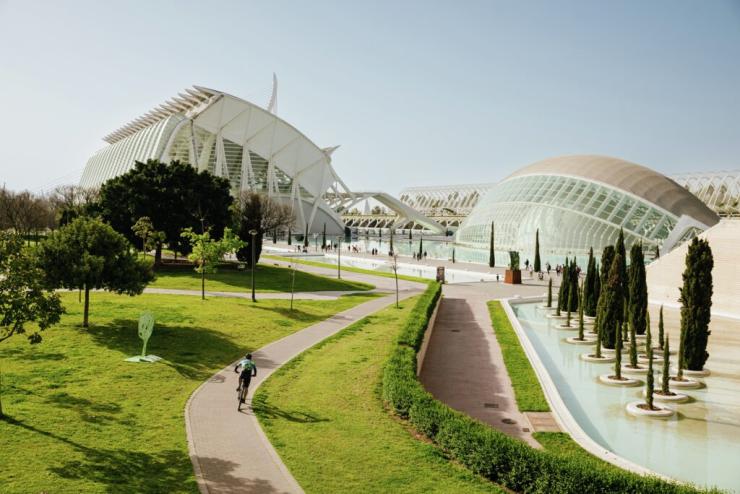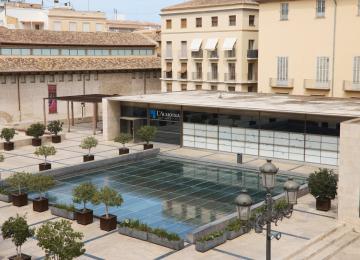An ancient, multifaceted city
The Valencia of the 21st century, with its modern and forward-looking image, and a brilliant present that stands out through structures like the City of Arts and Sciences, is multifaceted. And this multicultural and multifaceted reality is shaped to a great extent by the indelible traces of its 2150+ years of existence. The remains of the various dominant empires that forged it over the last three millennia have left an imprint that defines its character and that make it, if possible, even more appealing. A look back at its history is important to contextualize archeological remains, artistic manifestations, civil and religious buildings, but also customs and traditions that surround us when we decide to dig into its everyday reality. Remembering its past is essential to understanding the city we enjoy today.
The Roman Valentia (138 B.C.)
Consul Decimus Junius Brutus rewarded his legionaries, veterans of the Lusitanian wars against Viriatus, with fertile lands next to the Mare Nostrum in payment for their courage and years of service. Thus, in the year 138 B.C., Valentia was founded.
The first settlers built a fortified enclosure (oppidum) in one of the meanders of the Turia River that formed a river island, near the Via Augusta. With this decision, they started a trend that has been repeated throughout history: the Turia has always been the backbone of Valencia. At the beginning, the river carried water. Today, the water has been replaced with vegetation to create the green lung that crosses the city from west to east.
The settlement didn't have much time to prosper, since in 75 B.C. it was ravaged during the Sertorian war, falling into oblivion. Only the temple-sanatorium dedicated to the cult of Aesculapius, the Greek god of medicine, would remain standing.
Reborn like the Phoenix (2nd century A.D.)
The city's rebirth came at the end of the reign of Caesar Augustus, kicking off a period of prosperity that would lead Valentia, during the second century A.D., to have important public buildings, such as a large circus with capacity for 10,000 spectators. A section of its central wall can still be seen in the medieval cemetery of the church of San Juan del Hospital. The city was built around the forum, center of power, at the crossroads of two main roads, the cardus maximus (north-south) and the decumanus maximus (east-west), which coincide with what are today the streets Salvador-Almoina and Caballeros. All this is recorded in the archeological center of L’Almoina, the veritable ground zero for the city.
As the Roman Empire was declining, Christianity became accepted, to be followed by the Visigoth domination, which saw a period of transition and obscurantism. Its passage through Valencia is evidenced by the testimony of the Archeological Crypt of the prison of St. Vicente, which contains some interesting architectural remains.
The Arabic Balansiya (8th century)
The Iberian Peninsula came under Muslim domination in the early 8th century, and Valencia was no exception. The new dominant empire took possession of the city in the year 714 in a bloodless subjugation, thanks to a pact of surrender that allowed the old inhabitants to coexist peacefully with their new rulers from North Africa. The Roman Valentia thus gave way to Balansiya. This ruling empire would bring prosperity and knowledge to the city for the next 500 years, and a clear example of all this is the current system of water channels, fed by ditches, and the Water Tribunal, which still settles disputes between irrigators.
In 1021, Abd al Aziz, regarded as the first ruler of the Taifa of Balansiya, acceded to the throne, beginning a long reign of 40+ years, during which a new walled enclosure was built. It would remain intact until the construction of the medieval bastion. A few decades later, a mythical name would enter the city's history, that of Rodrigo Díaz de Vivar, better known as El Cid, who would come to Balansiya and take control. After a short period, Arab dominance would return. Power passed from the Almoravid to the Almohad dynasty, although their decline was by now inevitable.
En el año 1021 sube al trono Abd al Aziz, considerado el primer soberano de la Taifa de Balansiya, iniciando un largo reinado de más de 40 años en el que se edificará un nuevo recinto amurallado. Permanecerá intacto hasta la construcción del baluarte medieval. Pocas décadas después entra en la historia de la ciudad un nombre mítico, el de Rodrigo Díaz de Vivar, más conocido como El Cid, quien llegará a tomar Balansiya y adueñarse de la misma. Tras un corto periodo, pronto regresa el dominio árabe. El poder pasa de manos de los almorávides a la de los almohades, aunque el declive es ya inevitable.
Conquest of James I (13th-14th centuries)
Until, on October 9, 1238, the victorious troops of James I the Conqueror, from the Crown of Aragon, entered the city. The monarch would impose a law in the city, the Costum, which enshrined the rights of its inhabitants, a law that years later would be extended to the entire Kingdom of Valencia under the name of Furs (charter). The main mosque, which had been built on the remains of an ancient Roman temple, and in turn converted into a Visigothic cathedral, was consecrated as a Christian church, until, in 1262, the keystone of the current Cathedral was laid. Thus, the structure designed more than two thousand years ago by the first legionaries, veteran warriors turned builders, would mark the location of the seat of civil and religious power, which has remained unchanged through the ages.
The 14th century brought pestilence and epidemics, but it also tested the courage of its inhabitants when the king of Castile, Pedro I El Cruel, twice besieged Valencia, which did not surrender. This deed reconciled Valencians with the King of Aragon, Pedro IV El Ceremonioso, against whom they had defended their charter. The city was twice granted the title of loyal, indicated by the two Ls, which are can still be seen in its official shield, thus settling the previous dispute.
The Golden Century (15th century)
In the 15th century, Valencia experienced an era of great economic expansion, thanks to trade, and of great artistic productivity. The city was renowned well beyond its borders. This was no doubt helped by the presence, for the first and only time in history, of two Valencian Popes in Rome, Calixtus III and Alexander VI, who enthroned the Borgia house in the Holy See. The city grew and some of its architectural jewels emerged, most notably La Lonja de la Seda (The Silk Exchange), with its incomparable helical columns. A key entity in the dissemination of knowledge, namely the Universitat de València, was also founded.
In contrast to this enlightened period, the next century would be marked by the Revolt of the Brotherhoods, in which the guilds rose up in arms against the nobility. After a few years of resistance and hostilities, the defeat of this uprising, put down by the royal troops, gave way to the viceroyalty in Valencia of Germana de Foix, former queen consort of Aragon. This was a time of repression and executions that would only be appeased with the general pardon granted by Charles I in 1528.
Loss of charters (18th century)
However, nothing would be as traumatic for the city as the outcome of the War of Succession, triggered when Charles II died without descendants. Valencia took the side of the Austrian challenger, Archduke Charles, over the Bourbon aspirant, Philip, Duke of Anjou. The final defeat of the Central Europeans at the Battle of Almansa (April 25, 1707) resulted in the ascension to the throne of Philip V who, in retaliation for the support given to his rival, did away with the local charters through the Nueva Plant Decree. Valencia lost privileges and saw its culture persecuted. .
Major changes and expansion (19th century)
That was not the last armed conflict the city experienced, as it was besieged several times by Napoleonic troops during the War of Independence. Cannon ball marks are still visible in the Quart Towers, which were shelled by Marshal Moncey's artillery.
The city was growing and needed space to expand. And so it demolished its medieval walls in 1865. A decade later, l'Eixample (expansion) emerged, a new and more modern district with some notable architectural milestones, such as the Mercado de Colón, a jewel of Valencian modernism.
The tumultuous 20th century
The 20th century would be marked by the Civil War, an exercise in collective demolition. The brave Valentia, Balansiya the Great, would be for almost a year, from November 1936 to October 1937, the capital of the Republic. During this period, the city experienced a great cultural and social boom in a decade marked by destruction. The defeat of the legitimate government in 1939 would give way to four decades of iron rule under dictator Francisco Franco. These years were characterized by the repression of the elements that gave Valencia its identity.
Twenty years later, in 1957, the Turia River overflowed its banks and flooded the city, a tragic event that forever changed the city of Valencia. Out of the old riverbed sprung the Turia Garden, the vast municipal urban park that is today the green lung of the city. A great park that symbolizes the Valencia of the 21st century.
With Franco's death in 1975 and the adoption of the constitution in 1978, Valencia and the whole country would begin a period of democracy and freedom that extends to the present day.




